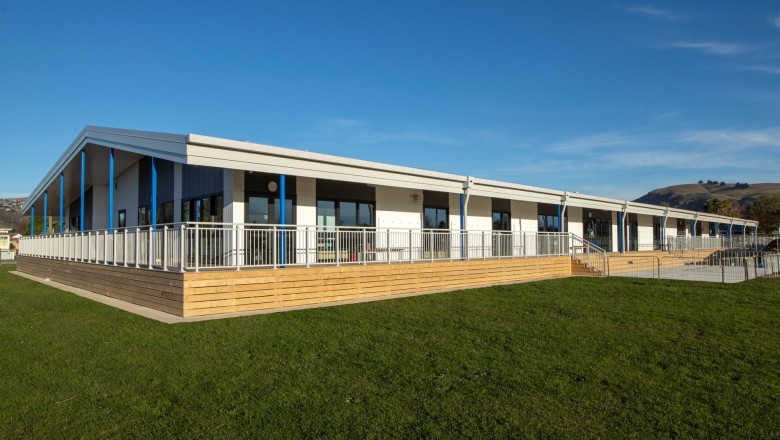Kids love their beautiful new school
Happy teachers and enthusiastic kids are celebrating a fantastic new school in Christchurch with Citycare Property’s rebuild of Bamford School in Woolston coinciding with a new name – Ngutuawa School.
The 1952 school had been damaged in the Canterbury earthquakes and was scheduled for redevelopment along with incorporating increased design criteria as an “Importance Level 3 Building”, which doubles as a Civil Defence assembly area for the neighbourhood.
Its new name means mouth of the river, reflecting the position of the school on Ōpāwaho/Heathcote River, and the building interior design and outfit complements that, Principal Shona Hewlett says.
“Our new school is absolutely beautiful. We are thrilled with the project management and very happy with the high standard of the work,” she says.
“The kids just love it – it’s warm and modern and they are very proud to have it.”
Classes began in the new learning areas in July 2020 after 11 months of construction. Then three months of demolition followed, Citycare Property Project Manager Barry Doe says.
The project involved the Citycare Property Construction team’s biggest ever concrete pour for the school floor.
The slab is made of more than 1,000 tonnes or 1 million kilogrammes of concrete, which took six hours to pour and seven days to water cure, Barry says.
The slab sits on large foundations – made from another 500 tonnes or 500,000 kilos of concrete – to take into account that the site is on a floodplain next to the river.
A challenge for the project was the tight access to the site from the road and the fact the school continued to operate in its adjacent original buildings.
The construction area was fenced off from the school and had independent access.
A particular difficulty was drivers manoeuvring in the narrow access for the delivery of the steel frame sections and the long insulated Kingspan roof panels, Barry says.
The school is a replica of a similar design used for Bishopdale School with the addition of a hall linked under one roof and separated by a walkway, allowing community activities to be held independent of the school.
Barry and the team learnt a lot about the history of the area during the project, particularly as archaeologists attended the site before the build began and during excavation work.
Among the treasures discovered in the rubbish pits and cultural layers on the site were several 19th century coins, two of them silver.
A rare find was a coin from Guernsey Island from 1830.
The school acreage was originally leased by solicitor John Dean Bamford in 1863 and later when he bought the land, his property extended from Ferry Road to the river banks.
His involvement in the Woolston community led to his boundary becoming known as Bamford’s Road – hence the area and the school’s original names. John’s son Henry Bamford was also prominent in the local community.
In the late 1940s the then farmland was split to widen the road and build the school.
Bamford Road was later renamed Gould Crescent on the Ferry Road side of the river. Then in the 1980s the river was partially diverted in the neighbourhood through the creation of the major flood alleviation channel known as the Woolston Cut.
The neighbourhood bestowed the construction team with a four-legged friend – a site cat who liked to claw out the string lines the team set up. (Tim the cat was later revealed as Twinkles and she lived across the road.)




